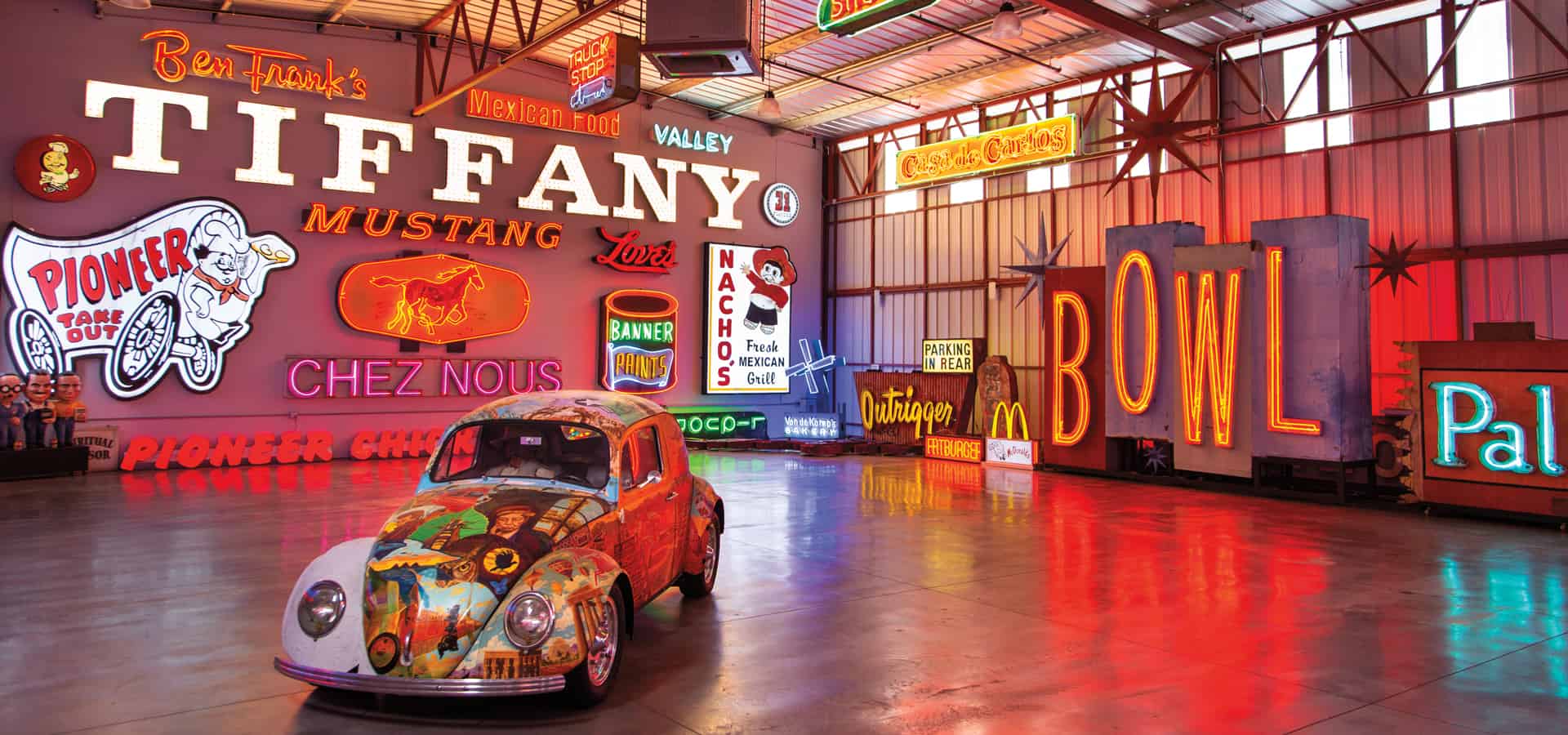Tommy Gelinas’ mission to preserve local history pays off with the Valley Relics Museum.
Travel back to the future.
-
CategoryPeople
-
Written byHadley Hall Meares
-
Photographed byShane O’Donnell
When you walk into the Valley Relics Museum and Events Space, discreetly tucked inside two hangars at the Van Nuys Airport, it’s impossible not to smile. The cavernous, kitschy space is filled with the most unique—and bombastic—artifacts from across the San Fernando Valley.
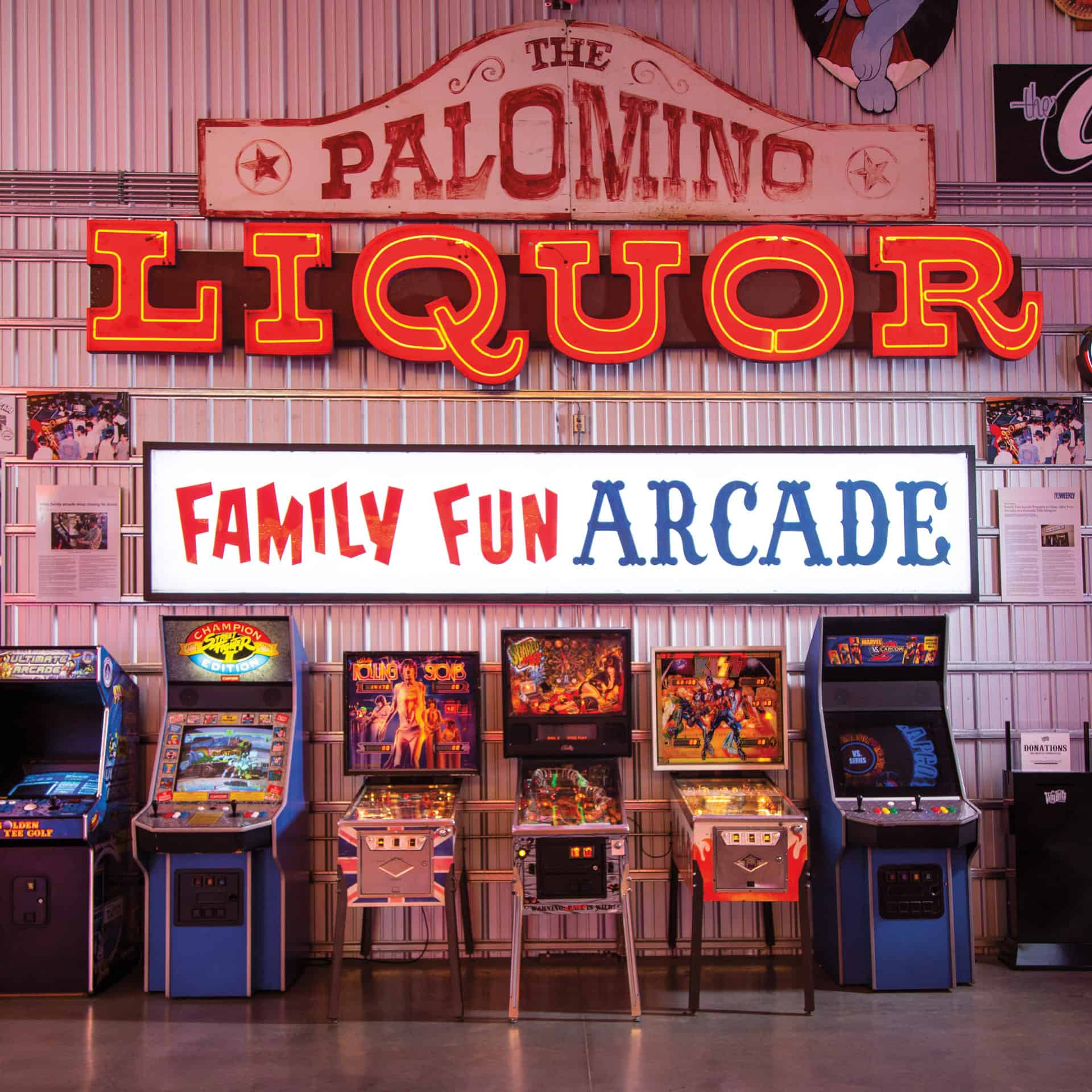
Amidst the classic neon signs, there’s the blinged-out 1964 Pontiac Bonneville wagon of Nudie Cohn, old Hollywood’s famous rodeo tailor, who turned everyone from Roy Rogers to Glen Campbell into rhinestone cowboys. Towering overhead: the massive equestrian statues that once graced the entrance to the Porter Ranch development. And in another corner, there’s an enticing row of vintage ‘80s arcade games from the beloved Family Fun Arcade in Granada Hills, which visitors can play for free. There are also smaller wonders, like one of the late comedien Phyllis Diller’s wigs and even a few gross ones like a gold ring featuring the molars of 1930-40s actor Jack Oakie. He lived at one of the Valley’s most prominent estates back in the day, Oakridge in Northridge.
“This history keeps getting torn down and pushed aside and built on top of. And our history is not that old to begin with!”
The museum is the life work of Tommy Gelinas, the infectiously passionate keeper of the Valley’s most relatable history. Tall, bespectacled and always wearing a hat, Tommy has collected memorabilia for as long as he can remember—dating back to the days when he kicked off his silkscreen T-shirt business. Now as a successful businessman, he can really put his chops into his hobby. Tommy is the quintessential Valley boy, growing up in North Hills and having also lived in Porter Ranch, Northridge and Sherman Oaks. He has fond memories of his childhood: “riding my bicycle, no shirt, no shoes, hanging out with all the kids on the block, riding all over the Valley during the summer, drinking out of the hose, driving around in the car with no seatbelt.”
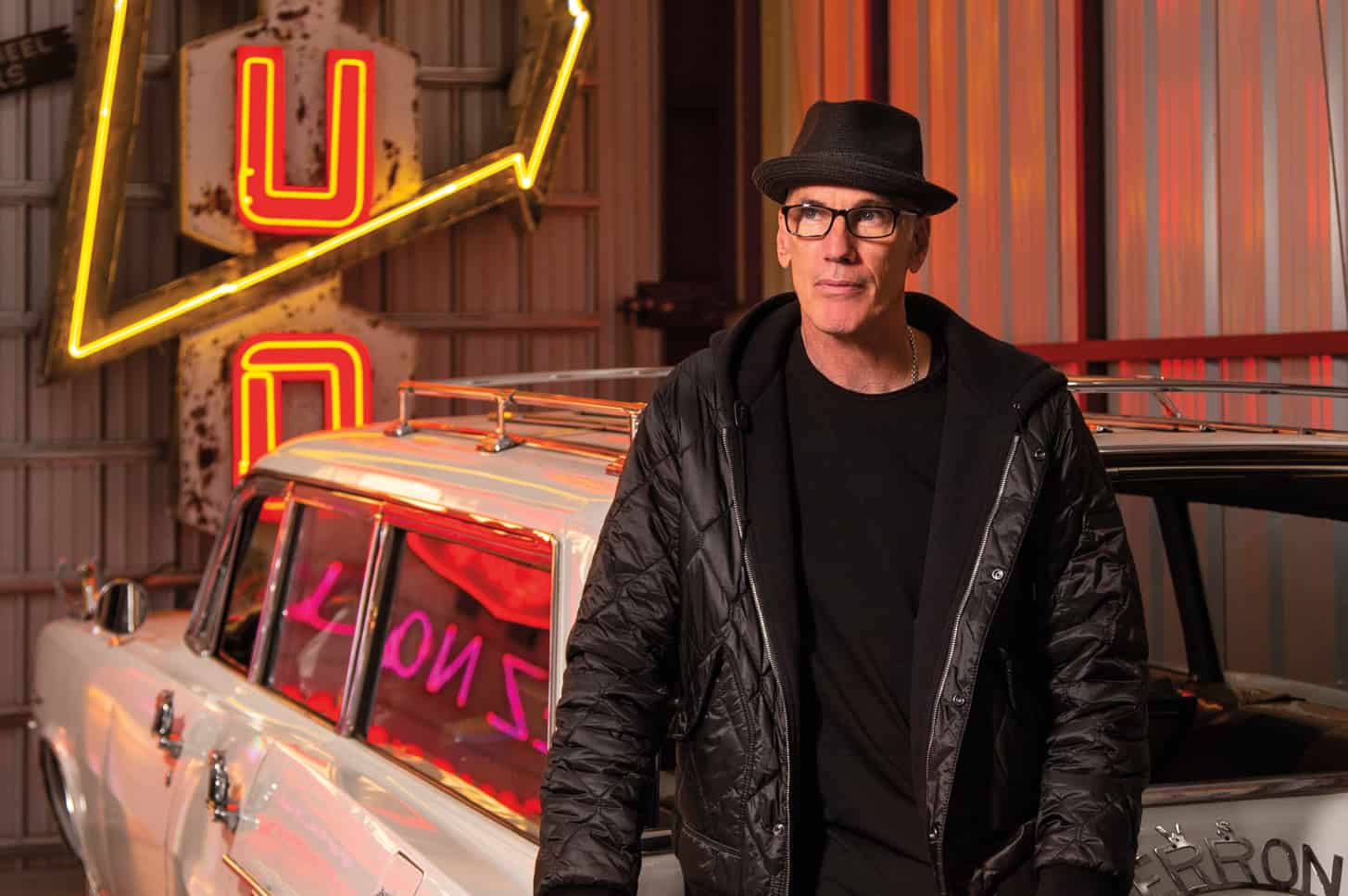
ONE OF A KIND
Tommy Gelinas resting on a tricked-out 1964 Pontiac Bonneville station wagon owned by “rhinestone cowboy” tailor Nudie Cohn.
It was these memories in particular that fueled Tommy’s quest to rediscover and understand his youth—ultimately leading to his extensive collection. Around the turn of the millennium, he started researching local history and was disappointed by what he found. “You can find a little bit on Mulholland bringing water to the Valley, the Tongva and Chumash Indians,” Tommy says. “It’s recycled history, which is really important and cool, but what about all the real, real interesting stuff—the pop culture stuff such as BMX, cruising Van Nuys Boulevard, a lot of the themed restaurants, the movie industry, the famous people that lived here, General Motors, Boeing, things of that nature?
“This history keeps getting torn down and pushed aside and built on top of,” he explains. “And our history is not that old to begin with!”
So Tommy set about rescuing Valley ephemera on his own. “I started collecting things along the way like postcards and ashtrays and menus—which I thought was really lame,” he laughs. “I thought it was like stamp collecting. Who would collect a postcard? Like that’s, you know, nothing personal, but that’s something an old person would do. And yet I found myself realizing that the postcard might be the only remaining picture in existence of what the establishment looked like.”
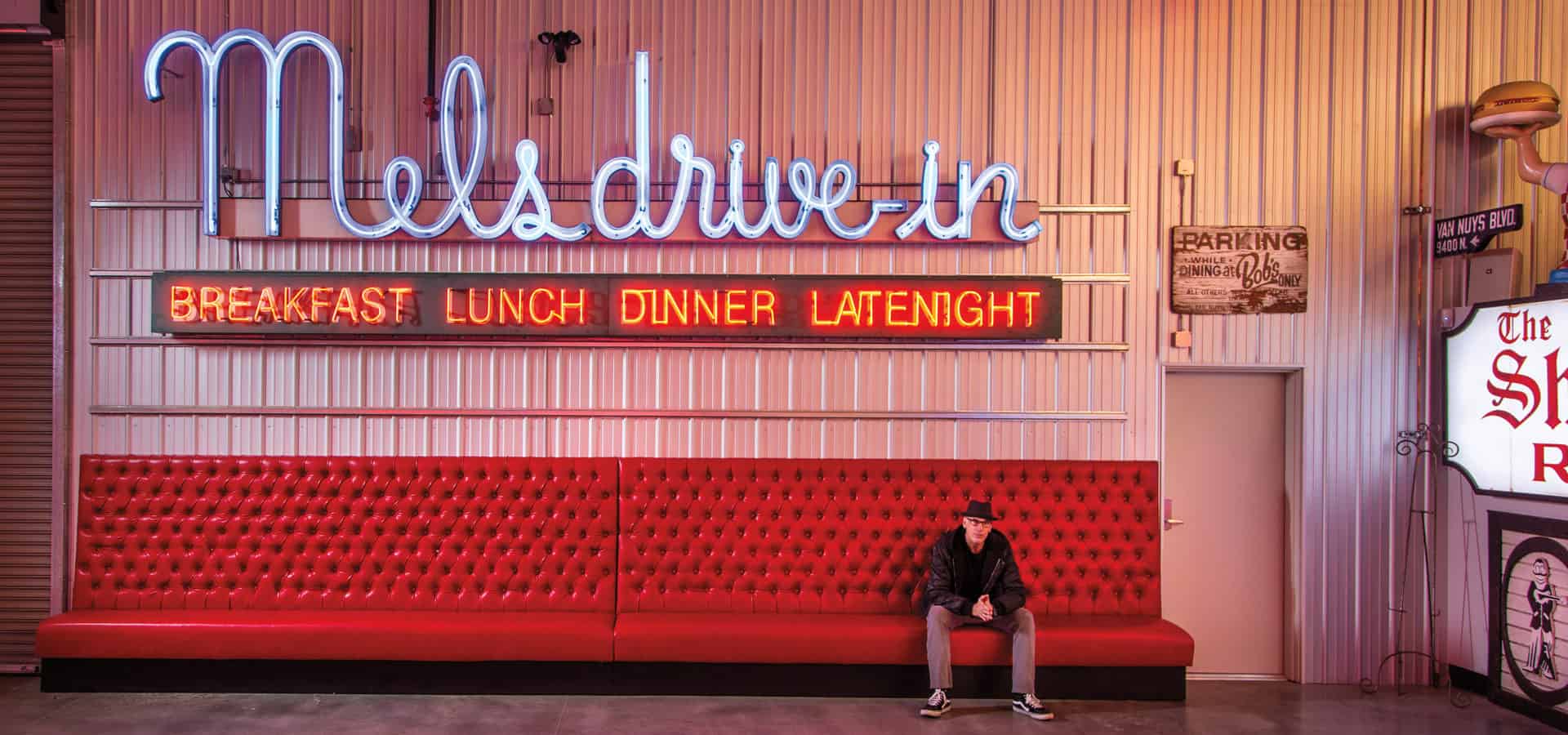
He next turned to the internet and started the Valley Relics website, where he quickly built an online community of fellow residents who were also eager to preserve the pop culture history. “Once I started, people started digging into the crates and started to share their photos with me,” he says.
As the years passed and his collection grew, Tommy and a group of dedicated volunteers began to hunt for larger relics. One of his first mammoth finds was the sign for the White Horse Inn, a popular restaurant and bar in Van Nuys, which had been a staple of his youth. “You know I used to drive up to that like as a landmark,” he explains. “Like ‘OK, let’s meet at the White Horse Inn!’ In like 1974, us Valley kids, that would be our first stop in our ventures.”
One of the biggest “rescues” was the discovery and rehabilitation of the iconic signs of The Palomino Club of North Hollywood (1949-1996). During the ‘50s and ‘60s, almost every notable country and western artist played at the legendary music venue, including Linda Ronstadt, Waylon Jennings, Gram Parsons and Emmylou Harris. In the ‘70s, The Palomino moved toward rock and roll with performers like Neil Young and Elvis Costello. Tommy longed for the signs, particularly the big one that hung out front. About 10 years ago, he saw it on MySpace, made some calls and got a hint that it was in Woodland Hills and literally started knocking on doors.
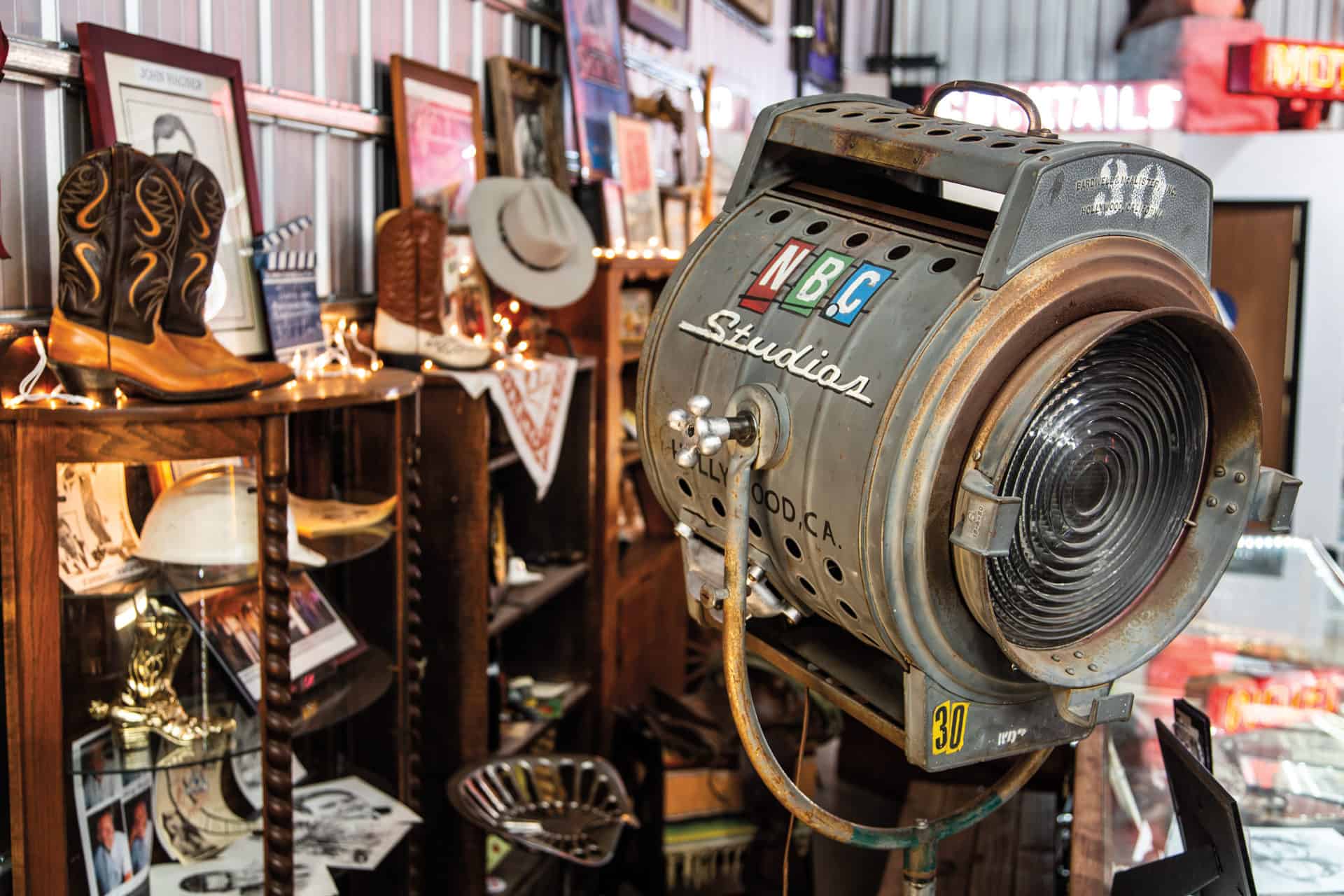
A few years ago, his hard work paid off. “One day I got a phone call and this guy says, ‘Hey, my name’s Scott, and I might have something you want. I own all the Palomino signs. I rescued them years ago.’ And I called the guy right back and was like ‘Well where are they?’ And he goes, ‘They’re outside, down the street from your museum, go get ‘em.’”
There in an outdoor lot, hiding behind pallets and old vending machines, lay the famed signs. “We picked them up and put some new transformers in and redid the neon, and now they light up like they did back in the early ‘50s,” Tommy says proudly.
Valley Relics became a nonprofit in 2012 and opened its first location in Chatsworth in 2013. This November they moved into the much more spacious Van Nuys Airport hangars, where Tommy tackled the artfully designed interiors himself. The space is available to rent for parties and events, and Tommy says throughout the holidays it was booked solid. “It is a no brainer—it’s a total tax write-off,” he quips.
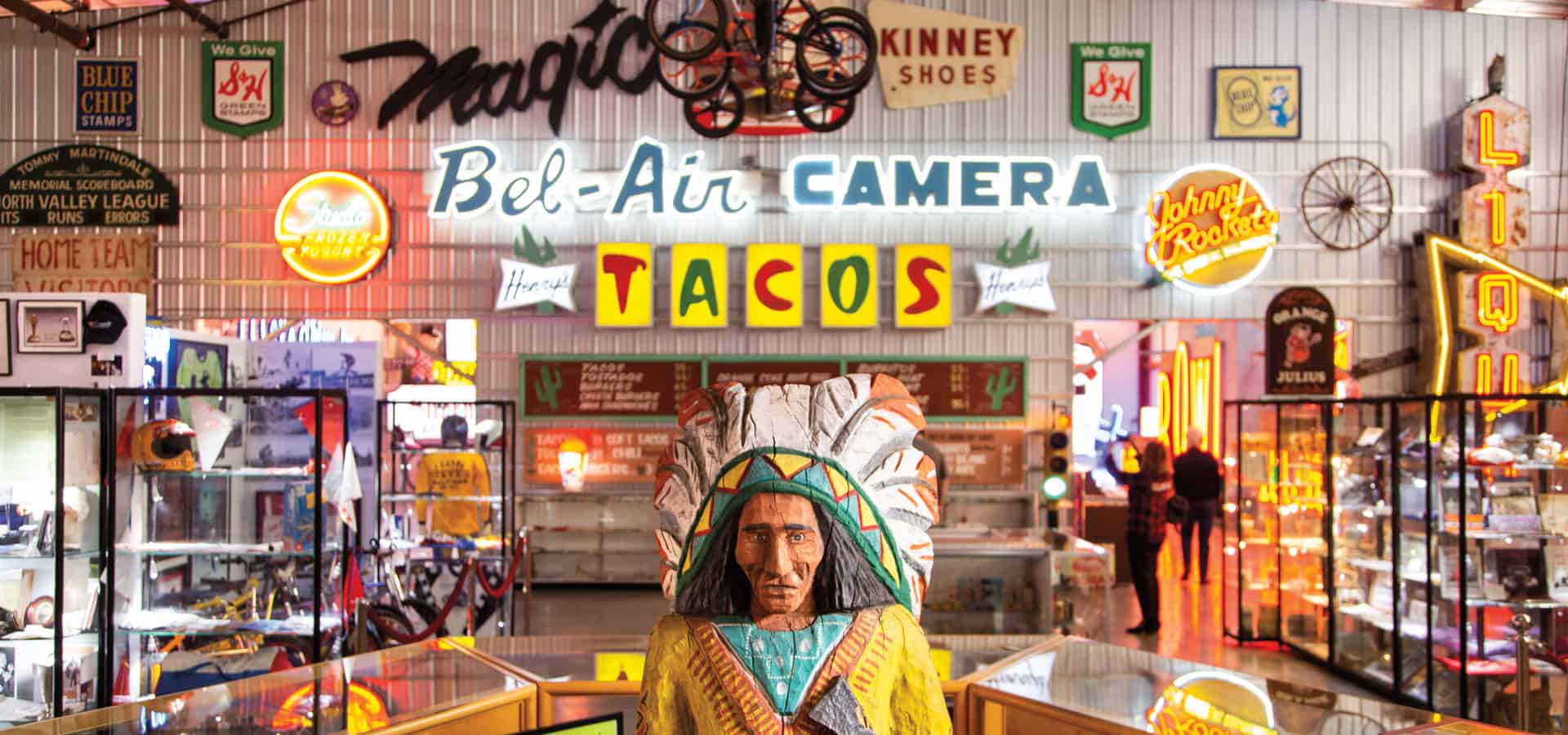
Tommy feels like the space finally befits the collection—which will rotate throughout the year. The hangars can only accomodate about a third of his artifacts; the rest are locked away in storage. He says the best thing of all is the community’s enthusiastic response.
“Usually Saturday and Sunday, we have about 200 to 300 people who stroll in here,” he says. “People run into their old boyfriend or girlfriends, people they worked with, their bosses. A lot of parents, they come here with their kids. They go, ‘You know, I’ve taken my kids to many museums, but it’s very interesting to see their response to all the colors, the lights, the arcade games, the bikes and learn about the history in the process.’
“That’s the whole point behind the museum,” he smiles. “It is to go look—like there is history here, a lot of history. And we helped shape the nation in so many ways.
“There is not another museum like it,” he says—with just the slightest hint of defiance.
Join the Valley Community






